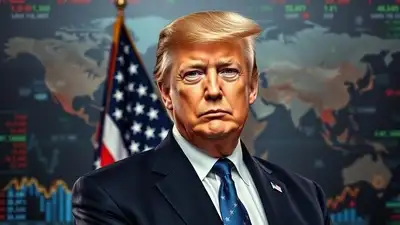Introduction
Trump Tariffs—basically taxes on imports—are like the broccoli of international trade. Nobody really likes them, but sometimes governments insist they’re necessary. Former U.S. President Donald Trump tariffs a major part of his trade strategy, especially when it came to Canada and Mexico. So, why did Trump impose tariffs on these neighboring countries? What was he trying to achieve? And did it work? Let’s break it down in simple terms.
Why Did Trump Want Tariffs?
Trump had a very strong belief that the U.S. was being taken advantage of in trade deals. Whether you agree with him or not, he saw tariffs as a way to fight back. Here’s why he pushed for them:
- Fixing the Trade Deficit – The U.S. was importing more than it was exporting, especially from China and Mexico. Trump wanted to change that by making foreign goods more expensive so people would buy American-made products instead.
- Protecting American Jobs – If companies had to pay more to import goods, the idea was they’d be more likely to manufacture products in the U.S., creating jobs. In theory, at least.
- Pressuring Countries to Renegotiate Trade Deals – Trump saw tariffs as a bargaining chip. By making imports expensive, he forced countries back to the negotiation table.
- National Security Concerns – He argued that depending too much on other countries (even allies) for materials like steel and aluminum could be a security risk.
Why Did Trump Put Tariffs on Canada?
You might think of Canada as America’s friendly neighbor who lets you borrow sugar whenever you need it. But Trump viewed Canada differently when it came to trade. He had a few key reasons for slapping tariffs on Canadian goods:
- Steel and Aluminum Tariffs (2018) – Trump put a 25% tariff on steel and a 10% tariff on aluminum from Canada, claiming it was a national security issue. Yes, you read that right—national security. Because nothing says “threat” like Canadian aluminum.
- Dairy Drama – Trump was not happy with Canada’s dairy supply management system, which he claimed was unfair to American farmers.
- NAFTA 2.0 – The tariffs were also part of his strategy to force Canada into a new trade agreement, which later became the USMCA (United States-Mexico-Canada Agreement).
What Tariffs Did Trump Impose on Canada?
Here’s a quick rundown of the main tariffs:
- Steel and Aluminum Tariffs – 25% on steel, 10% on aluminum. (Canada was not thrilled.)
- Softwood Lumber Tariffs – The U.S. argued Canada was unfairly subsidizing its lumber industry, so Trump continued existing tariffs on Canadian wood.
- Dairy Tariffs – This wasn’t a direct tariff, but rather pressure on Canada to change its dairy policies in the new trade deal.
Why Is Trump Putting Tariffs on Canada and Mexico?
Mexico got caught in the crossfire along with Canada. Trump’s reasons for targeting both countries included:
- New Trade Agreement Leverage – He wanted a better deal for the U.S., so he used tariffs as a way to make Canada and Mexico agree to new terms in the USMCA.
- Promoting U.S. Manufacturing – By making imports more expensive, he hoped companies would move production to the U.S.
- Border Issues – At one point, he even threatened tariffs on Mexico if they didn’t do more to stop illegal immigration. Because when in doubt, throw tariffs at the problem!
What Trump Tariffs Did Trump Impose on Mexico?
- Steel and Aluminum Trump Tariffs – Same as Canada: 25% on steel, 10% on aluminum.
- Auto Tariff Threats – Trump repeatedly threatened to tax Mexican-made cars, which would have hit Mexico’s economy hard.
- Immigration-Related Tariffs – In 2019, he warned Mexico that all their exports to the U.S. would face tariffs if they didn’t crack down on immigration. Mexico complied, and the tariffs didn’t happen.
What Was the Impact of Trump’s Tariffs?
Trump Tariffs might sound great in theory, but they had a big ripple effect. Here’s what happened:
In the U.S.:
- Higher Prices – Consumers paid more for things like cars, appliances, and even beer (thanks to the aluminum tariff!).
- Retaliatory Tariffs – Canada and Mexico hit back with their own tariffs on U.S. goods, which hurt American farmers and manufacturers.
- Business Uncertainty – Companies didn’t know if tariffs would change again, making it hard to plan.
In Canada and Mexico:
- Economic Disruptions – Key industries like steel, aluminum, and agriculture faced challenges.
- USMCA Was Born – The pressure from tariffs helped push through a new trade deal.
- Diplomatic Tensions – The U.S. and its neighbors had some rocky moments because of these policies.
Conclusion
Trump’s tariffs were one of the most debated aspects of his presidency. He believed they were necessary to protect American industries and jobs. Others argued they caused more harm than good, raising prices and straining relationships with allies. Either way, they left a lasting impact on trade policy.
And one thing’s for sure—whether you support tariffs or not, no one enjoys paying more for their favorite imported cheese or pickup truck!

